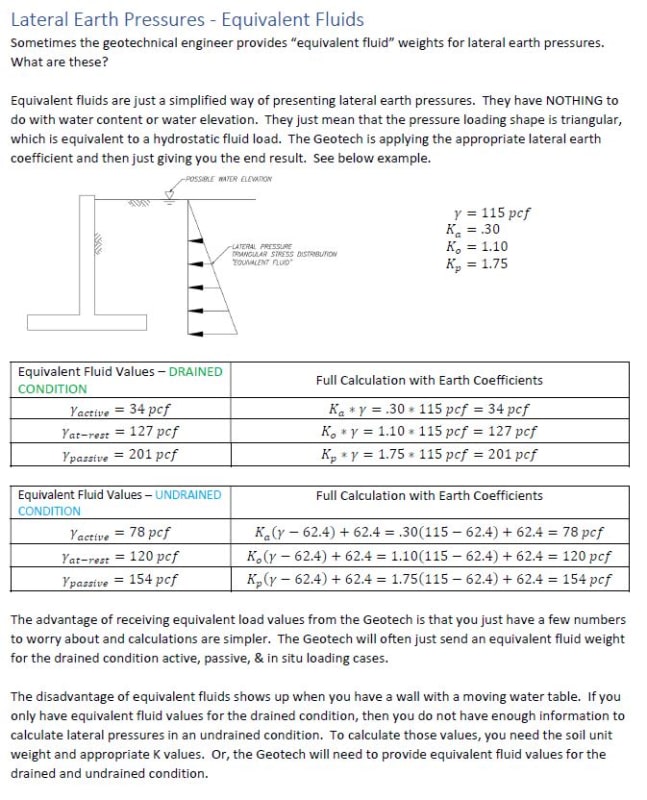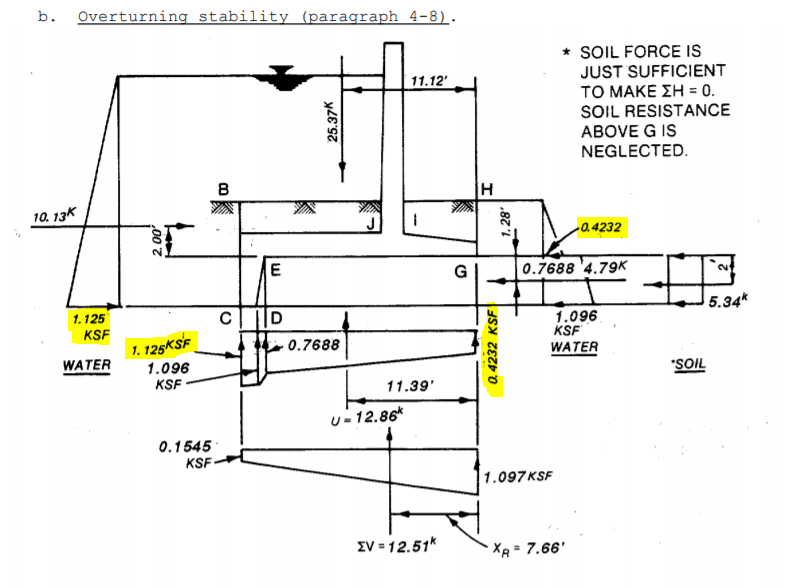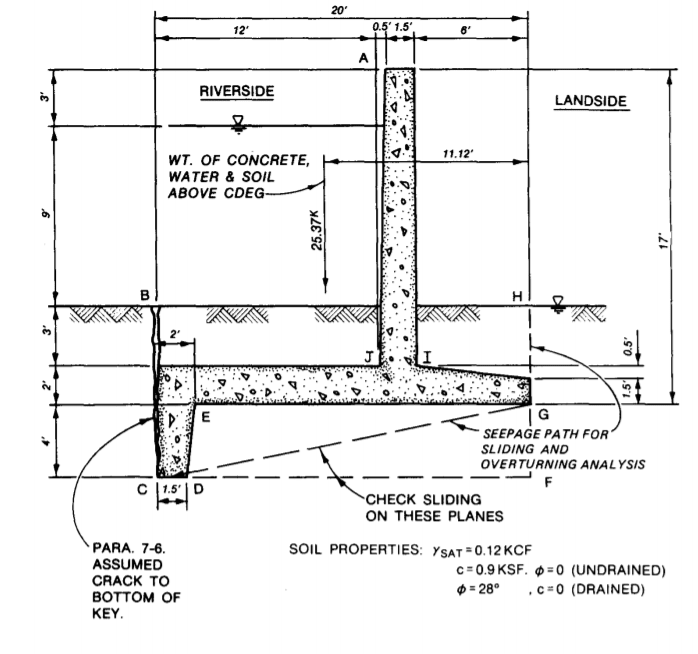Liam Nesson
Structural
- Sep 8, 2016
- 61
Hi All,
I am designed a cantilever floodwall to FEMA259 for the first time, the process seems relatively straight forward given the layout of the standard and worked examples provided.
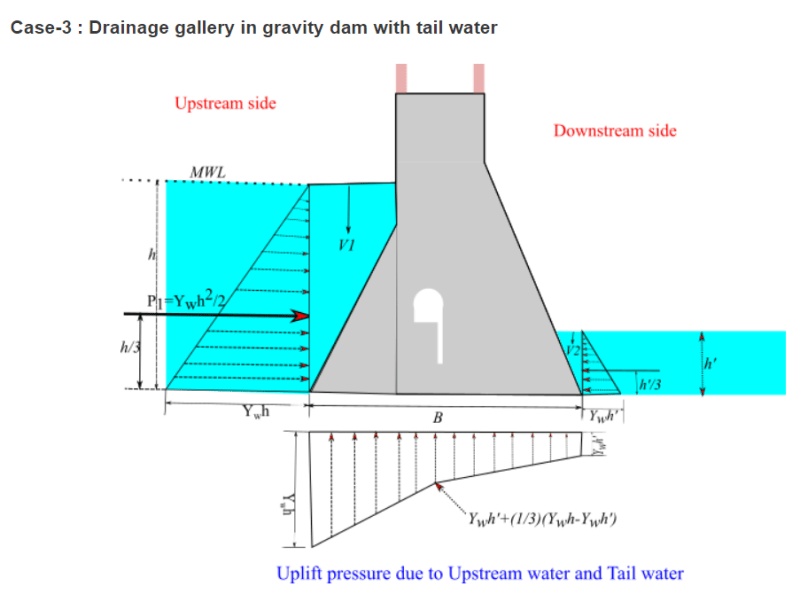
From what I understand, for Dam design the vertical downward and upward forces due to water pressure are considered. V1 and V2 being the downward forces, the base uplift pressure is the density of water times the height of water.
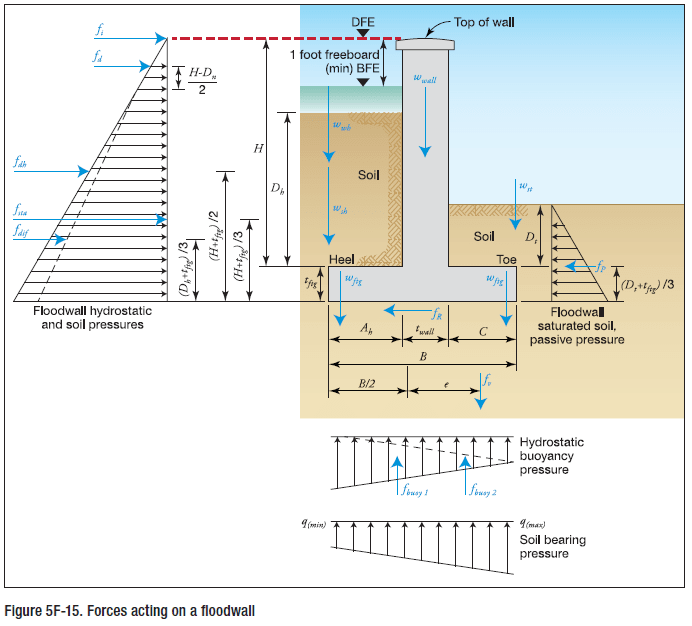
Fema on the other hand use downward vertical pressure combined with buoyancy pressure (not vertical upward pressure). It looks like it is double counting the downward pressure. Buoyancy is the vertical uplift pressure minus the vertical downward pressure on a submerged mass. W,wh and W,st are the downward forces due to water and f,buoy1 and f,buoy2 are the buoyancy forces acting upwards on the base. The formula used for buoyancy is the volume of the wall below the water elevation times the density of water.

1. I would like to hear other peoples take on this.
2. I am being to loose faith in this standard. They have done some other strange things that I have not seen before, treating the saturated soil on the flood side like a liquid to calculate the lateral pressure. Is that standard practice, I guess its conservative?
I am designed a cantilever floodwall to FEMA259 for the first time, the process seems relatively straight forward given the layout of the standard and worked examples provided.

From what I understand, for Dam design the vertical downward and upward forces due to water pressure are considered. V1 and V2 being the downward forces, the base uplift pressure is the density of water times the height of water.

Fema on the other hand use downward vertical pressure combined with buoyancy pressure (not vertical upward pressure). It looks like it is double counting the downward pressure. Buoyancy is the vertical uplift pressure minus the vertical downward pressure on a submerged mass. W,wh and W,st are the downward forces due to water and f,buoy1 and f,buoy2 are the buoyancy forces acting upwards on the base. The formula used for buoyancy is the volume of the wall below the water elevation times the density of water.

1. I would like to hear other peoples take on this.
2. I am being to loose faith in this standard. They have done some other strange things that I have not seen before, treating the saturated soil on the flood side like a liquid to calculate the lateral pressure. Is that standard practice, I guess its conservative?

![[idea] [idea] [idea]](/data/assets/smilies/idea.gif)
